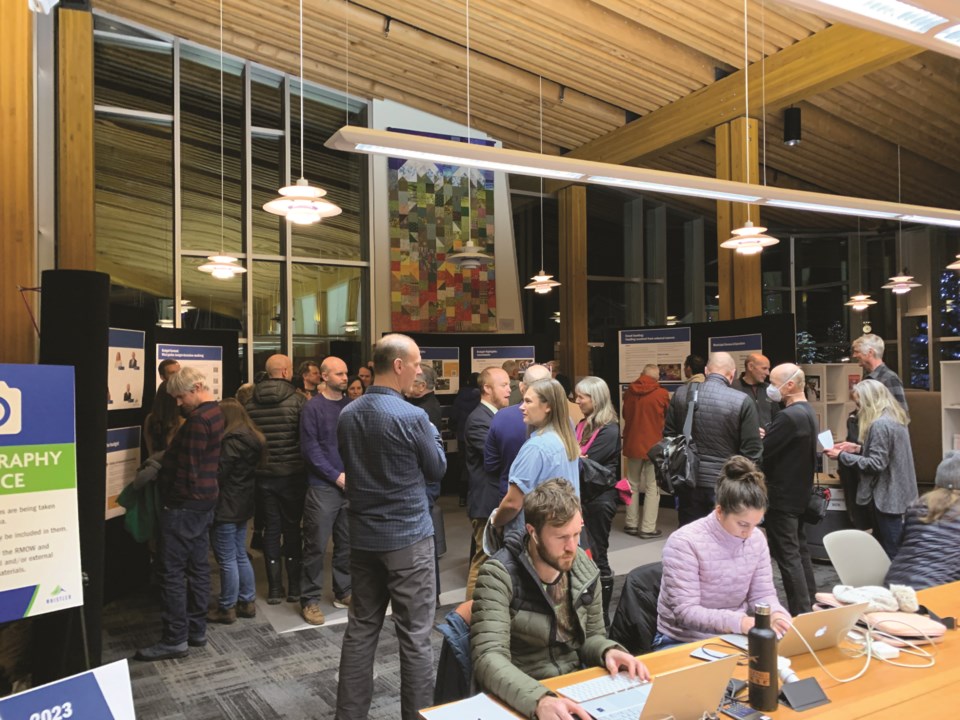When it comes to the resort-wide Community Life Survey (CLS), Whistler municipal officials are wrestling with an age-old question: how best to reach a young demographic on the cusp of putting down roots here?
“Certainly, we’re going to be putting more of a focus on youth engagement in 2025,” said Karen Elliott, the Resort Municipality of Whistler’s (RMOW) GM of community engagement and cultural services, at an Oct. 8 Committee of the Whole meeting, where staff presented highlights from this year’s CLS. “We need to hear from them how they want to be engaged, and will they pick up a phone and do a 15-minute survey? I don’t know … I think that’s something we need to discover because we really are missing their voice.”
One of the best barometers the RMOW has to uncover what both permanent residents and second homeowners think about everything from municipal services and decision-making to housing and community well-being, the CLS typically involves a phone and online poll that reaches several hundred people combined each year.
But like so many outreach efforts locally, the hardest-to-reach demographic is often the one that underpins the day-to-day workings of the resort: the young, transient workforce that is, for understandable reasons, less engaged with the wider community.
“Those young people that we fall all over ourselves to find out what they think, they love it here. That’s why they’re on the mountains having a great time, making lattes for us. They’re stoked with their experience—and why wouldn’t they be?” said Councillor Ralph Forsyth. “I think young people generally … whether you grew up here or grew up on the periphery, it wasn’t until you made a commitment to the town that you started caring about what was happening in the town.”
Richard Kemble, municipal economic development officer, admitted how challenging it was to reach Whistler’s temporary residents, saying he recalled 2017 being the last time the RMOW specifically tried to target that population with the survey.
“It is something we’ve done in the past, but it is extremely costly and extremely difficult, more so than the second homeowners, which certainly says something,” he said. “We know how many are responding to the online survey and it’s minuscule.”
Given the reality pointed to by Forsyth, both he and Mayor Jack Crompton agreed there was more benefit in targeting Whistlerites in the survey who have resided locally for a handful of years.
“I’m more interested in the person who has been here three to five years, and while talking to those who have been here six months helps you because they are very soon going to be here three to five years, ultimately I think you are right,” Crompton said to Forsyth. “Three to 10 years is the group we don’t talk to much and they are difficult to connect with, and that is incredibly important and interesting for us. I think you’re right to draw that line.”
In highlighting how respondents get their municipal information, there was a notable split between permanent residents and second homeowners. While the “local newspaper” (cough, cough) led the way for both populations, second homeowners were far more likely to turn to Pique as their main source, at 57 per cent, than permanent residents, at 32 per cent. For residents, the RMOW’s social media and email channels weren’t far behind, at 24 per cent, while second homeowners were more likely to look to friends and neighbours (14 per cent) than the RMOW (11 per cent) for their local government information, a sign, Elliott said, of the varied age demographics between the two groups.
“[The second homeowners’] demographic skews older, so they would turn more to traditional media more than younger generations,” she said. “Twenty-four per cent [of permanent residents] are turning to the RMOW’s social media and digital channels—not enough, in my opinion—but certainly more than our second homeowners, who don’t actually seem to be aware of them or connected to them at all, which is something I think we can work on.”
As the RMOW looks to focus on how to improve community engagement, it’s worth looking at how the community feels about how it gets to engage with the municipality. One of the survey questions the RMOW has tried to improve upon for years asks how satisfied respondents are with existing opportunities to provide input into municipal decision-making. The 2024 CLS showed that figure, 45 per cent, is up five per cent from last year, but it remains a concern for the RMOW, which hasn’t seen satisfaction higher than 56 per cent in the past half decade.
It's a big reason staff recommended hitting pause on the CLS for 2025.
“When we look at these results and just how hard it’s been to budge that number around engagement, and we see that not enough people are connected to us from our own channels, we would really like to do a couple things on engagement this year to reach those folks,” explained Elliott.
One of those things is finding new ways to connect with second homeowners, such as sending targeted regional mailing out inviting them to connect to the RMOW’s digital channels, weekly newsletter, and future surveys.
The municipality also wants to better understand the data it has collected over more than a decade and a half through the CLS.
“Now that we have 16 years of data and the world is changing all the time, staff would really like to take this year to look at: what is the data that we’ve been collecting all the time?” Elliott said. “Is it being used by both people within the RMOW, but also externally? Are these the right indicators that will take us forward into the future that we feel is revealing itself to be more unpredictable and providing more complex challenges?”
Check back with Pique (or, uh, your preferred information source?) for more on the full CLS results once they are formally released at a future council meeting.






